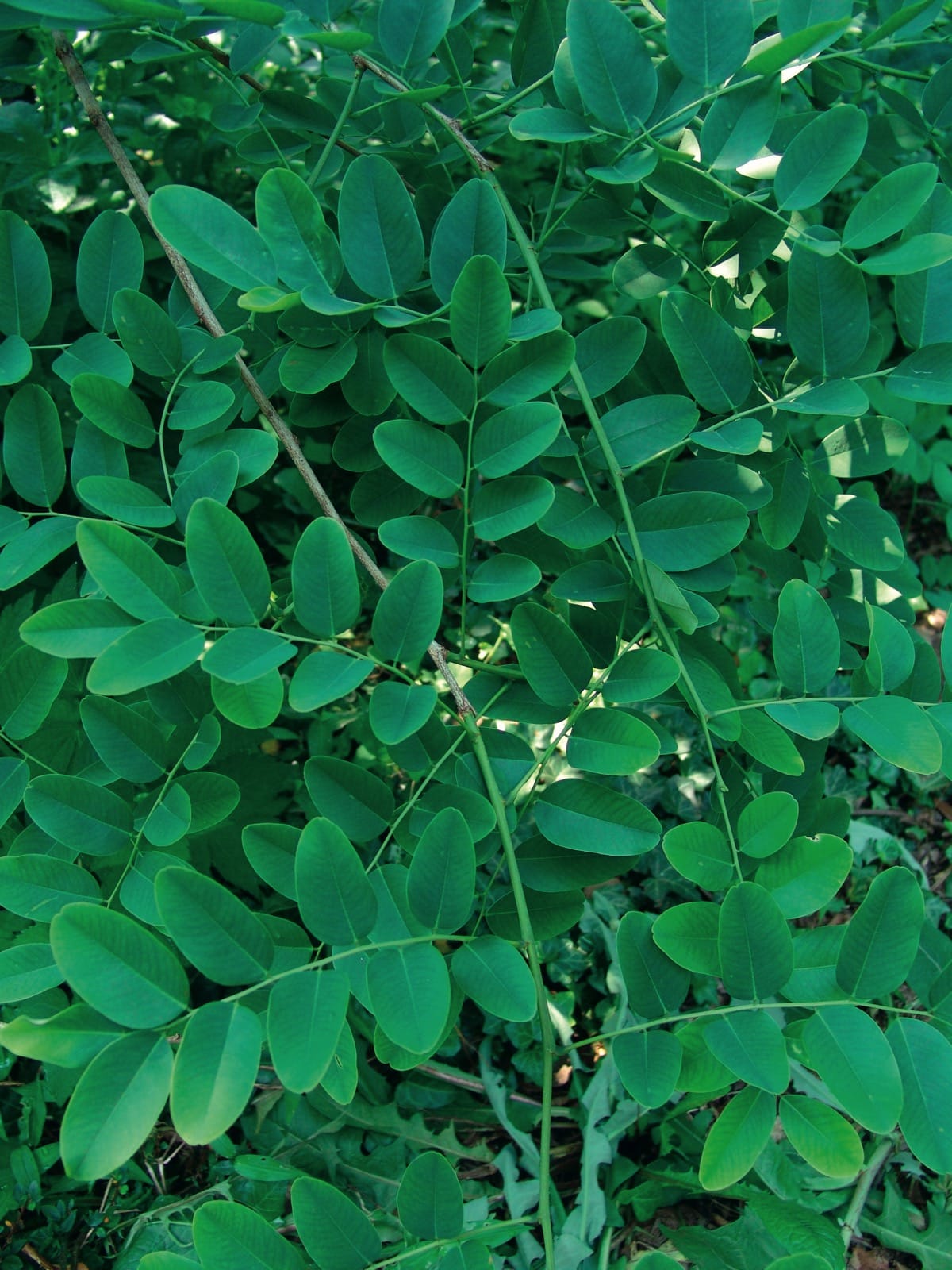Dalbergia hupeana
Credits
Article from New Trees by John Grimshaw & Ross Bayton
Recommended citation
'Dalbergia hupeana' from the website Trees and Shrubs Online (treesandshrubsonline.
Genus
Other taxa in genus
Tree 10–20 m. Bark very shaggy, dull grey. Branchlets pale green, glabrous. Leaves imparipinnate; leaflets 7–11, elliptic to oblong, 3.5–6 × 2.5–4 cm, sub-leathery, upper surface shiny, margins entire, apex obtuse or slightly emarginate. Panicles terminal, sometimes also in the upper leaf axils, 15–20 × 10–20 cm; sparsely covered with rusty pubescence. Flowers white or pale purple; calyx campanulate, 0.2–0.3 cm long; standard petal circular, emarginate, wing petals obovate and half-moon shaped, keel petals auriculate; stamens 10, in two bundles of five. Lomentum oblong to broadly ligulate, 4–7 × 1.3–1.5 cm, thinly leathery, containing one to two (to three) seeds; seeds kidney-shaped. Flowering May to July, fruiting September to October (China). Chen & Nielsen 2006. Distribution CHINA: Anhui, Fujian, Guangdong, Guangxi, Guizhou, Henan (?), Hubei, Hunan, Jiangsu, Jiangxi, Shandong, Shanxi (?), Sichuan, Yunnan, Zhejiang; LAOS; VIETNAM. Habitat Forested areas on mountain slopes, in ravines and along streams, between 800 and 1400 m asl. USDA Hardiness Zone 7. Conservation status Not evaluated. Illustration Prain 1904; NT304.
Dalbergia hupeana is extremely rare in cultivation, apparently being grown only in a handful of arboreta in the eastern United States. At the JC Raulston Arboretum it was received as seed in 1988 from the Shanghai Botanic Garden and has grown extremely well, forming a tree of about 12 m when seen in May 2006. Even at this season it had not started to develop any sign of buds, and indeed looked completely dead, but it is known for being exceptionally late to leaf out – the last tree in the collection to do so (T. Alderton, pers. comm. 2007). At the US National Arboretum it is grown from a collection made in the Wudang Shan, Hubei, by K. Conrad and P. Meyer in 1994 (WD 106), who recorded in their field notes that the parent tree was growing on a cut-over dry hillside with several other potentially large trees including Castanea mollissima, Maackia chinensis and Quercus species. It is also in cultivation at the Morris Arboretum from the same collection, but although it is growing steadily there (about 4 m tall in 2007) it is ‘not at all ornamental’ (A. Aiello, pers. comm. 2007). It would seem that D. hupeana has not been tried outside this relatively small area of the eastern United States, and that it is not commercially available. In consequence it is difficult to draw conclusions about its requirements in cultivation, but it seems to appreciate the hot humid summers and tolerate the winters of this area.

